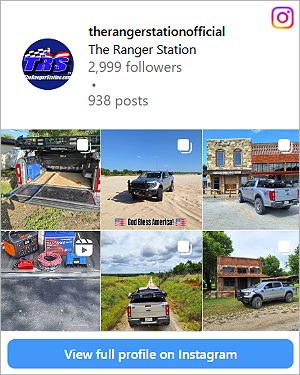blackwidow
Member
- Joined
- Jul 5, 2013
- Messages
- 6
- Vehicle Year
- 1999
- Transmission
- Automatic
Hi Everyone. This is my first post, so please don't get mad if I've overlooked something. I have a 99 Ranger XLT 3.0 4WD that blew a head gasket in Feb. so this is not extremely urgent since I have been fooling with this since then. But it is important because I have been driving it. The radiator overflow cap kept blowing off from pressure and bubbling. I did a Steel Seal and it helped a lot (settled down the bubbling, pressure, and temp. gauge, and I can drive) but Steel seal told me to figure out which cylinder is losing combustion, pull the plug, and run this stuff one more time for an hour without the spark plug. Running a 6 cyl. without a plug for an hour is a little scary. What do you guys think about doing this?
Anyhow, the shop wanted another $139 to do a compression test so I went ahead and just bought one. I pulled the plugs to see how they looked and now I am getting a misfire from #5 and #6 according to my scanner.
I don't mean to sound so ignorant, but I am getting conflicting methods of doing the compression test. I do not have any mechanically inclined friends that can help me because they are all married and their wives either wouldn't believe it or just plain wouldn't like it. I know a little bit about '70s V8s and even rebuilt the engine in my old Challenger, but I am just not sure about this newer stuff. If I was younger, I'd just pull the heads but since then I've had both arms operated on three times and I am finding that I am just not that strong anymore.
I like my truck and really don't want to have to get rid of it. I have pictures that I'll post with my questions below.
Pic #1: Do I just unplug this - is this the plug to the coil pack?
Pic #2: My starter relay has two terminals on it - didn't see 3 or 4 - should I attach the remote starter plugs to each side of this? (Online it says small wire connection at starter (purple) and other to + on battery terminal -- I cannot find a purple wire at the starter. Just one tan one.) The haynes book says "push on electrical connector at the relay red with bluestripe wire" - I have neither.
Pic #3: Is the fuel relay the 4th from right on bottom row under the hood #5? The owner's manual says #5 high-current fuse: "ignition switch starter relay" 50A and then lists #5 again on the same page for fuel pump relay and "-" (just a dash) for the fuse amp rating.
Pic #4: I think I found the inertia switch for fuel on the floorboard on the passenger side by the mat. Should it be unplugged?
On the ranger forum it says that I am supposed to warm up the engine for about 20 minutes - no more
Remove the the fuel pump relay
Disconnect the ignition coil pack connector
Crank the engine to relieve fuel in lines
The Haynes book says
warm up to operating temperature
clean around spark plugs
remove all spark plugs
block throttle wide open
disable ignition system via unplug the inertia switch
If anyone has time, I'd appreciate some advice. Thank you much.
Anyhow, the shop wanted another $139 to do a compression test so I went ahead and just bought one. I pulled the plugs to see how they looked and now I am getting a misfire from #5 and #6 according to my scanner.
I don't mean to sound so ignorant, but I am getting conflicting methods of doing the compression test. I do not have any mechanically inclined friends that can help me because they are all married and their wives either wouldn't believe it or just plain wouldn't like it. I know a little bit about '70s V8s and even rebuilt the engine in my old Challenger, but I am just not sure about this newer stuff. If I was younger, I'd just pull the heads but since then I've had both arms operated on three times and I am finding that I am just not that strong anymore.
I like my truck and really don't want to have to get rid of it. I have pictures that I'll post with my questions below.
Pic #1: Do I just unplug this - is this the plug to the coil pack?
Pic #2: My starter relay has two terminals on it - didn't see 3 or 4 - should I attach the remote starter plugs to each side of this? (Online it says small wire connection at starter (purple) and other to + on battery terminal -- I cannot find a purple wire at the starter. Just one tan one.) The haynes book says "push on electrical connector at the relay red with bluestripe wire" - I have neither.
Pic #3: Is the fuel relay the 4th from right on bottom row under the hood #5? The owner's manual says #5 high-current fuse: "ignition switch starter relay" 50A and then lists #5 again on the same page for fuel pump relay and "-" (just a dash) for the fuse amp rating.
Pic #4: I think I found the inertia switch for fuel on the floorboard on the passenger side by the mat. Should it be unplugged?
On the ranger forum it says that I am supposed to warm up the engine for about 20 minutes - no more
Remove the the fuel pump relay
Disconnect the ignition coil pack connector
Crank the engine to relieve fuel in lines
The Haynes book says
warm up to operating temperature
clean around spark plugs
remove all spark plugs
block throttle wide open
disable ignition system via unplug the inertia switch
If anyone has time, I'd appreciate some advice. Thank you much.
















